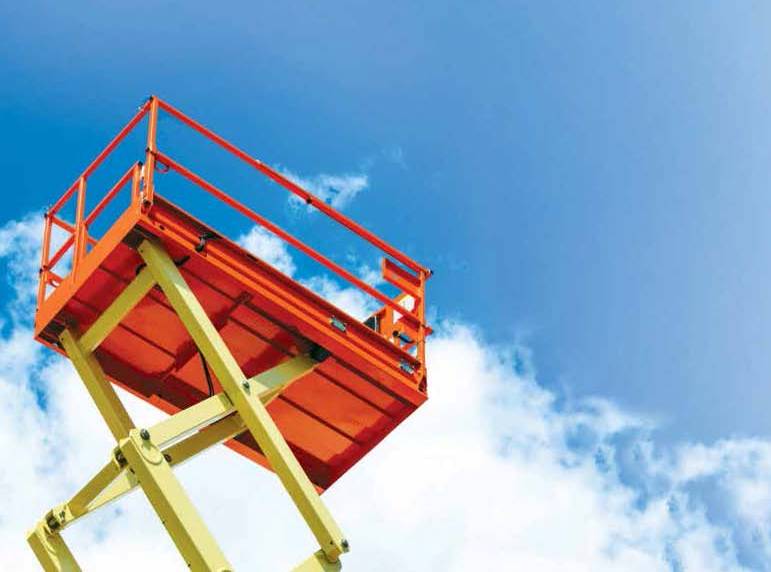Equipment leasing 101: Important considerations
 Whether you’re a small residential contractor or a large commercial painting business, purchasing new equipment such as ladders, lifts, sprayers or compressors—or capital assets for your office including copiers, software, furniture and computers—can bring with it a confusing array of financing options … along with several potential pitfalls.
Whether you’re a small residential contractor or a large commercial painting business, purchasing new equipment such as ladders, lifts, sprayers or compressors—or capital assets for your office including copiers, software, furniture and computers—can bring with it a confusing array of financing options … along with several potential pitfalls.
The first choice you’ll need to make is whether to purchase the equipment outright (using cash on hand or your bank line of credit) or lease the equipment from a bank, leasing company, equipment manufacturer, or distributor.
As a general rule, equipment leasing requires much less cash up front (100% financing is often available) and will be permitted under the loan agreements with your existing bank. More importantly, leasing almost always results in a lower monthly payment than an outright purchase because:
• leasing companies usually offer longer lease terms than that of a typical bank equipment loan; and
• with a lease, you’re paying only for the right to use the equipment during the lease term (a shorter period than the equipment’s total useful life).
Leasing is also more flexible than a purchase since, at the end of the lease term, you have three options: purchase the equipment at its present value, continue leasing it (or financing the buyout with a new term loan), or return the equipment and trade it in for new leased equipment.
ANALYZING YOUR BUDGET
Before you take a look at what equipment is available, take some time to flesh out your budget. First, decide what size monthly payment you can afford, keeping your average monthly cash flow in mind. Factors to consider:
• The extent to which your cash flow is seasonal (leasing companies can often structure payments accordingly);
• Whether the equipment purchase will be a one-off or a series of purchases over time; and
• The additional revenue or profit (through reduced expenses) that will be generated by the new equipment (for example, the new equipment may enable you to bid for larger jobs or complete jobs more quickly, creating more revenue). Or the new equipment may reduce maintenance costs—compared to the old equipment being replaced—or increase productivity, thus permitting you to shed employees.
CHOOSING YOUR LESSOR
You can lease equipment from a bank, a leasing company that specializes in equipment financing, or an equipment manufacturer/distributor—also known as a ‘captive’ lessor.
Banks typically have the most expensive financing, but it may be easier and faster to use your existing bank since they already know you and your business. Leasing companies usually offer the most flexible terms. If your business will continue to need a large volume of leased equipment over time, a leasing company’s ‘asset management’ consulting services can help you create an overall leasing strategy over the long term. Captive lessors often have the least-expensive financing, but give you fewer choices, since captives will only finance their own brand of equipment.
DON’T FORGET UNCLE SAM
You’ll want to consult your accountant about your company’s particular tax situation but, as a general rule, the Federal Tax Code makes leasing more attractive than outright purchases. For example, if you purchase equipment, you are required to amortize, or spread out, the cost of the equipment over its useful life, taking depreciation deductions each year. In contrast, if you lease the equipment, Section 179 of the Federal Tax Code may permit you to deduct the entire purchase price in year one of the lease (even if that amount exceeds the total lease payments), subject to some conditions. Of course, if you take that deduction in year one, you can’t also deduct the lease payments as an annual business expense.
THINK BIG PICTURE
Spending some time looking at your financial options and comparing the effect of a lease vs. a purchase will pay dividends in the long run, helping you upgrade or add equipment in a way that works best for your bottom line.
______________________________________________________________________________________________
NEGOTIATING THE DOCUMENTS
It’s often worth it to hire a lawyer to review lease documents even if the leasing company tells you that they are ‘standard forms’ or ‘not negotiable.’ Commercial leases are not written in plain English like a consumer car lease and are not subject to consumer protection laws. Specific sections that deserve special attention are:
• Penalties for early termination
• The logistics for delivery and acceptance of the equipment (who pays for it, can you return equipment that doesn’t work)
• Whether advance lease payments must be made to serve as a kind of collateral (these advance payments will then be credited at the end of the term against the last lease installments)
• The mechanics of the purchase and renewal process at the end of the term (and whether the lease automatically renews)
• How equipment is returned at the end of the term (where is it stored or delivered, who pays for storage or delivery, what constitutes ‘ordinary wear and tear’)
• Does sales tax apply, and who pays it?
• Whether the leasing company can assign your lease
• The leasing company’s remedies if you default
Your lawyer can also help you figure out whether the equipment lease is permitted under your current bank loan documents and whether notice to the bank (or the bank’s consent) is required.




